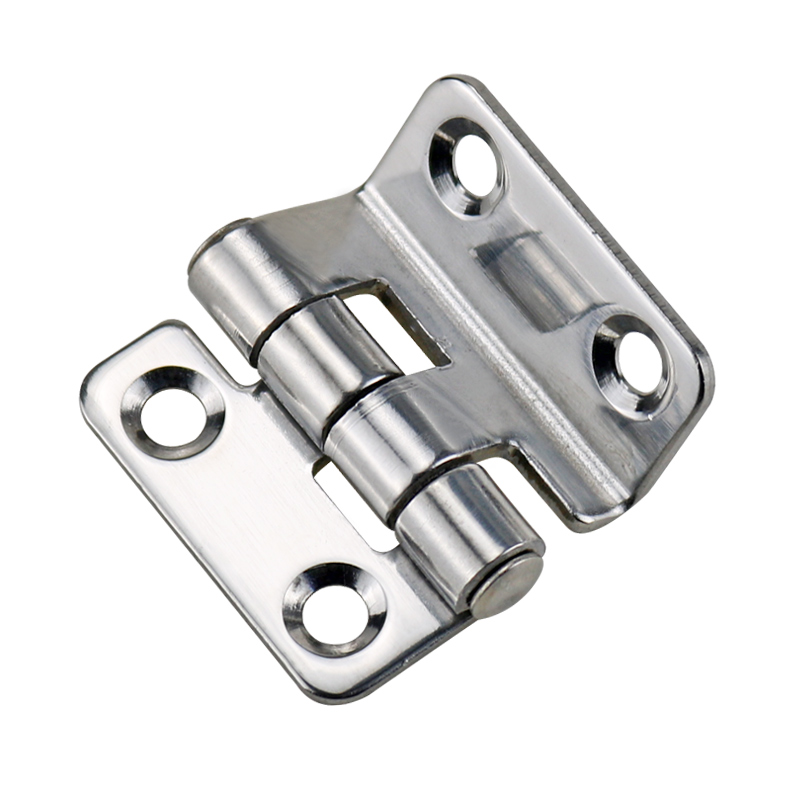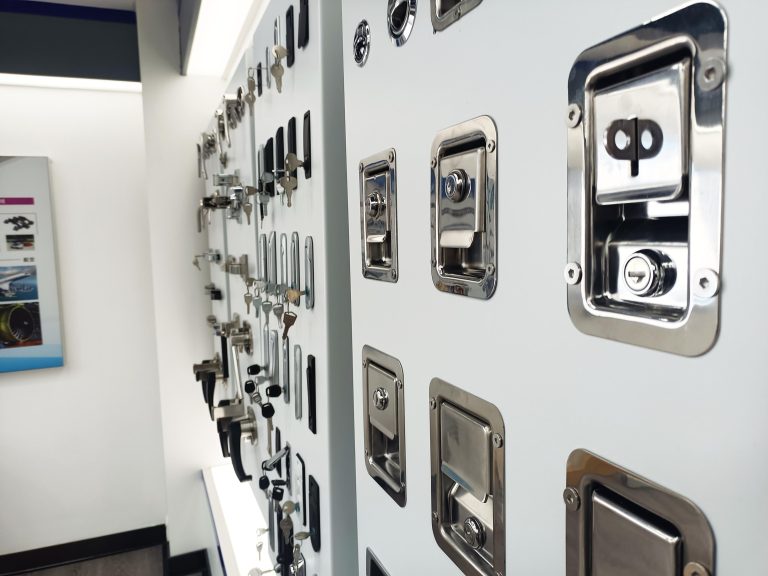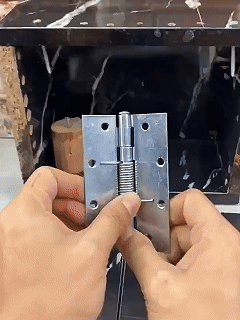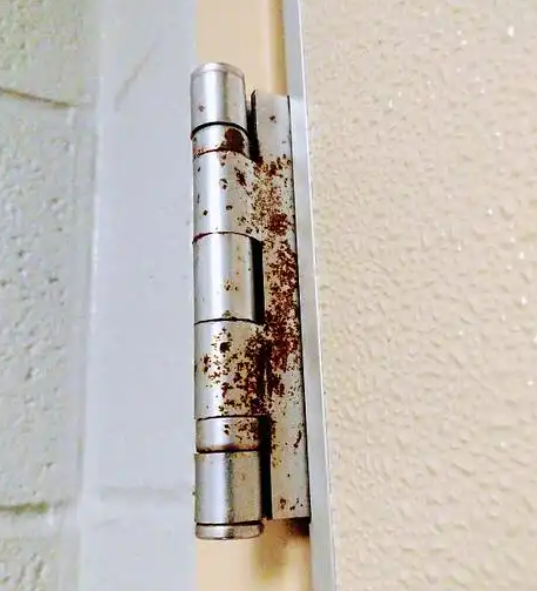HTAN is one of the leading manufacturers of industrial hinges, handles and latches in China.
-
+86 13720060320
-
julius@haitangs.com

Designing Industrial Hinges: The Role of Countersunk and Through Holes
Industrial hinges, as the core components of mechanical equipment, doors and windows, realize the rotation function through connecting parts.
Its mounting hole design (countersunk/through hole) directly affects the assembly efficiency, aesthetics and structural stability, and is a key element of the manufacturing process.
What is a countersunk hole?
Countersunk holes are tapered or cylindrical reamed structures used to hide the head of a screw so that it is flush with the surface of the material.

The above image shows a stainless steel hinge (countersunk hole)
Common forms of countersunk holes
Tapered countersunk holes
Holes with tapered mouths for countersunk head screws.
Flat countersunk holes
With a flat bottom, suitable for situations where a larger support surface is required.
Features and benefits of countersunk holes
Countersunk hole design makes the embedded surface of the screw flat, avoiding bulging interference and improving safety; conforms to ISO/DIN international standards, suitable for medical equipment and electronic cabinets in the narrow space of the installation needs to enhance the texture and versatility of the product.

The above image shows a stainless steel hinge (through hole)
What is through-hole?
Through-hole refers to a circular hole through the material, which is simple and easy to process.
Features and Benefits of Through Hole
Its core advantage lies in its flexible installation, which can be fixed by directly inserting bolts and nuts, eliminating the need for countersinking and significantly reducing production costs.
No special tools are required for maintenance and disassembly is efficient, especially for equipment requiring frequent maintenance.
This design is widely used in industrial automation equipment, outdoor cabinets and other fields that require high assembly efficiency.
Comparative Analysis of Countersunk Hole and Through Hole
Comparison item
| Comparison item | Countersunk hole | Through hole |
|---|---|---|
| Appearance | The head of the screw is flush or hidden, and the surface is clean | The head of the screw is exposed, which may affect aesthetics |
| Installation Difficulty | Precise control of the depth and angle of countersunk holes, high processing requirements | Direct drilling, simple operation |
| Screw type | Countersunk head screws (e.g. flat head, semi-circular head) | Cylindrical head, hexagonal head, flange face screws, etc. |
| Costs | Long processing time, slightly higher costs | High processing efficiency, lower costs |
| Applicable scenarios | Equipment with high demands on appearance or space | Simple structure, occasions requiring frequent maintenance |
Practical application scenarios in industrial hinges
Typical applications for countersunk holes
Medical equipment door hinges
To avoid screw protrusion affecting cleanliness, and at the same time meet the requirements of aseptic environment.
Precision instrument cabinets
To prevent the head of the screw from interfering with the operation of the internal components, to ensure the safe operation of the equipment.
Typical applications for through holes
Industrial robot guards
Facilitate quick disassembly and maintenance, and adapt to high-frequency maintenance needs.
Outdoor power control cabinets
Use rust-proof bolts with through holes to facilitate on-site replacement of parts.
How to make decisions based on hole type when selecting hinges
Judgment basis
- Installation space: Prefer countersunk holes when space is narrow to avoid screws protruding.
- Appearance requirements: Countersunk holes are recommended for devices with high appearance requirements (e.g. consumer electronics).
- Maintenance frequency: Frequent disassembly scenarios (such as production line equipment) are suitable for through-hole.
- Screw type: Check whether the existing screws are suitable for countersunk holes or through holes.
Practical advice
- Communicate with the hinge supplier at the early stage of design to confirm the hole specifications and tolerance requirements.
- Simulate the installation according to the 3D model provided by the manufacturer to avoid rework at a later stage.
FAQ
Can countersunk holes be changed to through holes?
Yes, but it is necessary to re-evaluate the structural strength and confirm whether the screw length is sufficient to penetrate the material.
Does a different hole pattern affect the load capacity of the hinge?
Countersunk holes may slightly reduce localized strength due to deeper machining, but usually do not affect overall performance.
Do different hole types affect water resistance?
Countersunk holes are easier to add seals to realize waterproofing, while through holes need to be matched with sealing gaskets or glue.
Conclusion
In the design and selection of industrial hinges, the choice of countersunk holes and through holes has a direct impact on the functionality, aesthetics and maintenance costs of the product.






